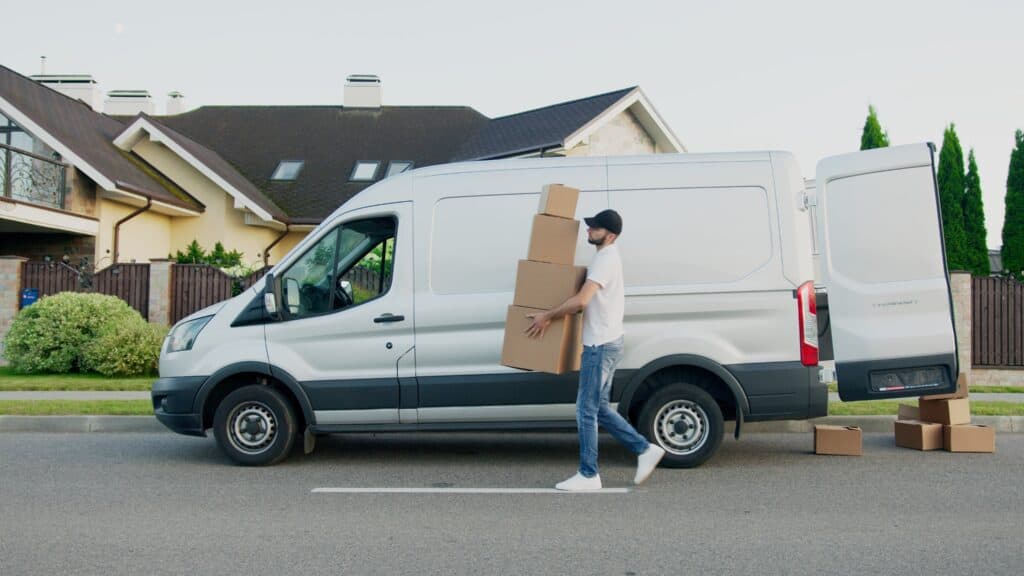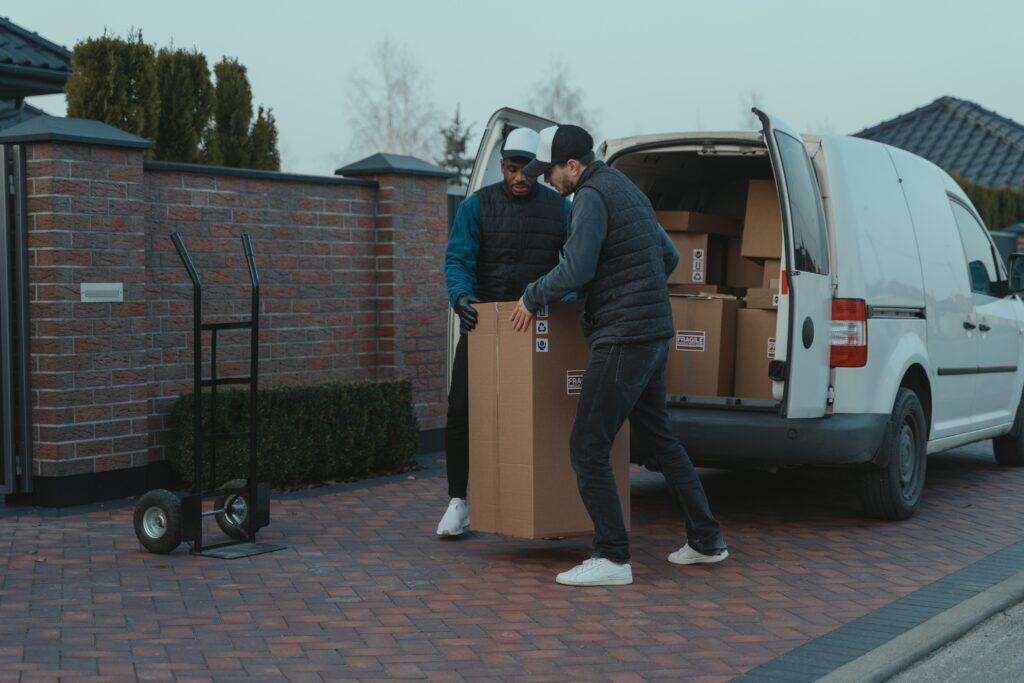
What is Last-Mile Transportation? Examples, How It Works & More

Wise Systems
What is Last-Mile Transportation? Examples, How It Works & More

Wise Systems

The transport of goods from a distribution point to the final destination is the most challenging and costly component of the supply chain. Last-mile transportation, also known as final-mile transportation, is an essential element of the overall last-mile delivery process. This article provides an overview of last-mile transportation and explores challenges, how it’s connected to other elements of last-mile delivery, and best practices for successful last-mile transportation.
In this article:
- What is Last-Mile Transportation?
- Why is Last-Mile Transportation Important?
- How Last-Mile Transportation Works
- Frequently Asked Questions
What is Last-Mile Transportation?

Photo by Artem Podrez via Pexels
Last-mile transportation is the movement of goods from a distribution point to the customer – either a consumer or another business. Last-mile delivery, last-mile logistics, and final-mile delivery are broader terms that include all the tasks necessary to successfully move goods from a distribution point to the final destination. In addition to transportation, this includes:
- Order tracking
- Scheduling
- Asset management and resource allocation
- Dispatching
- Route planning
- Customer communication
- Real-time tracking
- Monitoring of conditions that may impact delivery
- Delivery confirmation
Final-mile transportation refers to the physical movement of goods using a delivery vehicle, although the transport of goods is closely interwoven with all the other necessary aspects of last-mile delivery.
Why is Last-Mile Transportation Important?

Photo by Tima Miroshnichenko via Pexels
To better understand the concept of last-mile transportation, let’s look at a few examples. Last-mile delivery is typically used to describe the overall process involved in the final leg of a product’s journey, including the planning process, resource management, and other aspects.
Last-mile transportation is one of the most important components of that process. There are various final-mile transportation options, such as:
- Delivery vans
- Bicycle delivery services
- Robots
- Drones
- Electric vehicles
However, none of these last-mile transportation options are effective without the other crucial components of last-mile delivery, from resource allocation to route planning, real-time tracking, and delivery confirmation.
How Last-Mile Transportation Works
Final-mile transportation is so closely interwoven with the rest of the last-mile delivery process that it’s difficult to discuss as a standalone concept. Therefore, below, we’ll take a look at the role last-mile transportation plays in the overall final-mile delivery process.
- Route Planning and Optimization
Routes may be static, with each driver following the same delivery route each day regardless of changes in condition such as weather, failed deliveries, and other variables.
Dynamic route planning, on the other hand, plans new routes each day based on real-time data on road conditions, weather, customer time windows, and other factors. This planning may be conducted using dynamic routing software, route optimization software, or another type of application.
- Order Receipt
Once an order is received, it’s entered into a central digital system.
- Real-time Notification and Tracking
The customer receives a notification to inform them that their order has arrived. Further notifications take place at each of the following steps, keeping customers informed about the precise location of their order and its estimated delivery.
Customers can also monitor the status of their order at any time through a customer portal software or other real-time tracking system.
- Goods Arrive at a Distribution Point
The product(s) in the order arrive at a distribution point, typically a distribution center, where it remains until it’s loaded onto a delivery vehicle for transport to the end customer.
Orders are assigned to delivery personnel and delivery vehicles for transportation to the final destination based on factors such as scheduled delivery routes, customer locations, delivery time windows, and other variables. Drivers are notified via a driver mobile application or other method.
- Last-mile Transportation
This step in the process is last-mile transportation, during which the assigned delivery driver and vehicle move the order from the distribution point to the customer’s location.
- Order Confirmation
The customer receives a notification that their order has been delivered.
There are many additional steps and considerations throughout the process, but the steps outlined above represent the primary tasks involved in the final-mile delivery process.
Various software solutions can support different stages in the last-mile delivery process. However, a comprehensive solution like the Wise Systems delivery automation platform offers all the crucial applications and functionality you need to run an optimized, efficient last-mile delivery operation.
With a fully integrated solution for every stage, Wise Systems is a powerful and user-friendly platform that keeps your operation running smoothly and supports both driver and customer satisfaction. Request a demo today to learn how Wise Systems can transform your last-mile delivery and last-mile transportation processes.
Frequently Asked Questions
What is a last-mile mode of transportation?
Last-mile mode of transportation refers to the type of transportation used to complete the last-mile delivery process. This may include modes of transportation such as:
- Traditional delivery vehicles – vans, trucks of various sizes, and passenger vehicles
- Electric vehicles, including electric scooters and e-bikes
- Bikes
- Drones (future)
- Automated delivery robots (future)
There are also other means of getting products into the hands of the end customer, such as parcel lockers. In this case, the customer transports the item from the parcel locker to their home or business location.
What is the average cost of last-mile delivery?
Last-mile delivery accounts for 53% of total shipping costs, making it the most expensive stage in the supply chain. According to Statista, 41% of worldwide supply chain costs are attributed to last-mile delivery.
Costs vary substantially based on numerous factors such as:
- Density of the geographic area
- Size of the package
- Mode of transportation
- Fuel costs
- Driver or carrier wages
- Vehicle maintenance
- Problems such as failed deliveries
Estimates range from $10 to $50 per package, with small packages typically falling at the lower end of the range and large items typically falling at the higher end. Some deliveries, such as large electronics, can exceed $50 per item.
What is a last-mile delivery carrier?
A last-mile delivery carrier is a person or entity responsible for completing the last leg of the supply chain by transporting items from a distribution point to the end customer.
How long does a last-mile carrier take?
Much like the cost of last-mile delivery, the length of time required for last-mile delivery varies significantly based on factors such as:
- Distance between the distribution center and the customer’s location
- Delivery routes
- Availability of personnel and resources
- Type of vehicle required for final-mile transportation
A last-mile carrier can take anywhere from a few hours to up to 10 business days to complete final-mile delivery. In the past, last-mile delivery typically took between 5 and 10 business days. Today, however, with the rise of e-commerce, tight competition, and customer demands for speedy delivery, same-day and next-day delivery is increasingly common, and in some cases, last-mile delivery can be completed within a couple of hours.

